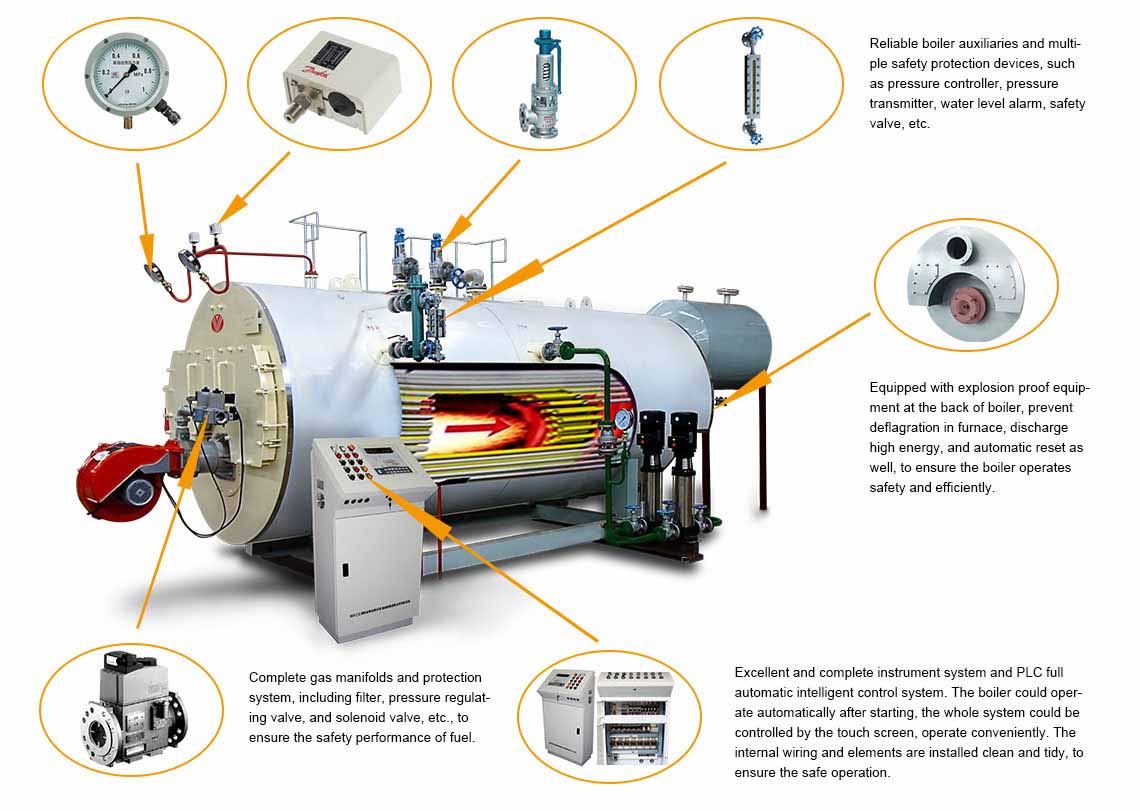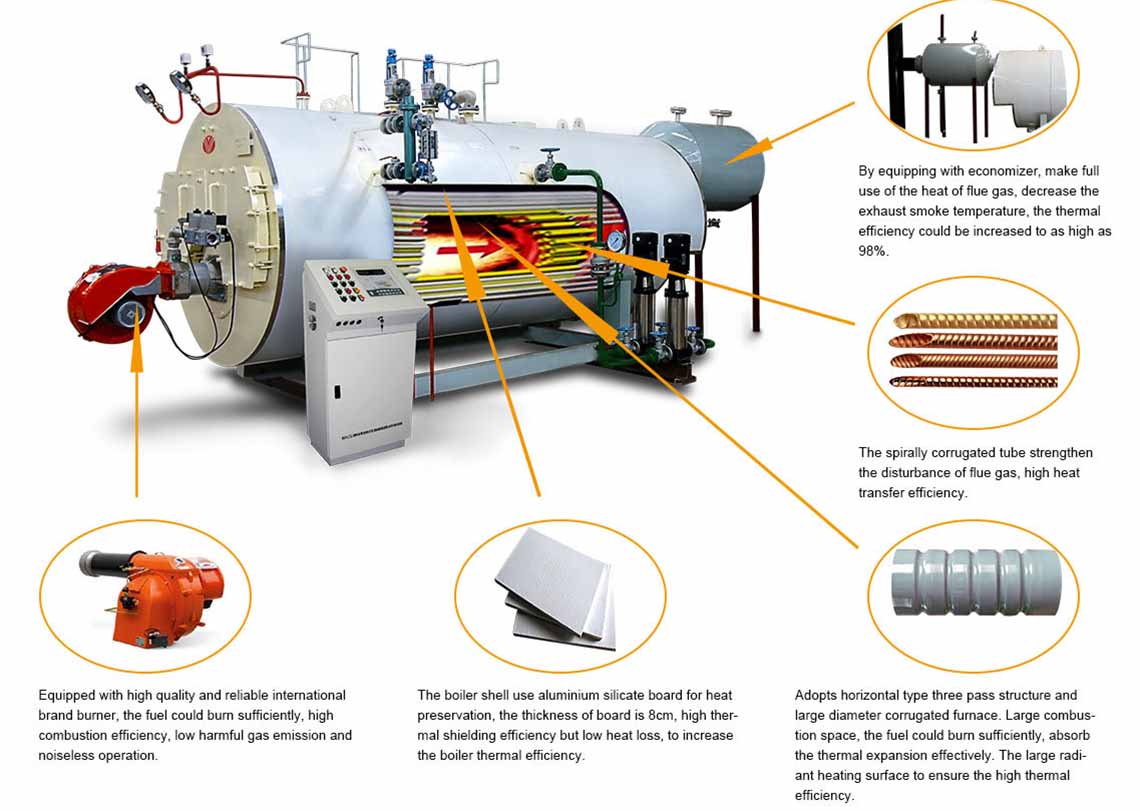Introduction
The industrial LPG fired steam boiler is a kind of safe and high efficiency heating equipment with full automatic control system. Except LPG fuel, the gas boiler can also burn other oil or gas fuel, such as city gas, natural gas, diesel, heavy oil, etc. The industrial LPG steam boiler is fast assembly fire tube boiler with three pass structure, it has compact structure, small volume, strong load adaptability and low water quality requirement. This boiler adopts wet wet back structure, it can adapt to the high temperature, has a good sealing, increase the radiation heat transfer area and improve the heat transfer efficiency.
As the industrial LPG fired steam boiler has the characteristics of compact structure, safe operation, convenient installation, low pollution and low noise, it is widely used for industry production and processing, such as textile mill, medicine industry, food & beverage industry, chemical industry, garment industry, food processing industry, and wood processing industry, moreover, it could be used for central heating in enterprise, hotel, hospital, civil architecture, etc. .jpg)
Products Advantages
1. High Quality Assurance

1) There is a professional design engineer team, before manufacturing, every boiler design drawing have to be approved by boiler and pressure vessel experts of CSBTS ( State Bureau of Quality Technical Supervision ), and then the boiler could be produced only if qualified.
2) To ensure the raw materials quality, all the steel plates are special-used for boiler with the Inspection Certificates. The raw material materials are inspected when entering factory, and only the qualified material could be put in storage and used for production.
3) To ensure the welding quality, there a professional welding team, including more than 30 senior welders. The welding materials are stored under constant temperature and humidity, to ensure the welding material quality.
4) The welding quality will be further examined during boiler manufacturing, by using x-ray detection, ultrasonic flaw detection, magnetic test, or penetration test, etc.
5) To ensure the boiler quality, the leakproofness and strength of pressure parts will be tested. The hydrostatic test is done to make sure there are no water drop or water mist leakage appear on steal wall or welding joint, no water leakage appear at the place of expansion, and no obvious residual deformation and abnormal situation.
6) To ensure no problems before boiler delivery, all the raw materials and boilers are supervised and inspected by the experts of Inspection Institution for Boiler and Pressure Vessel. There are international uality certificates of ISO 9001 and CE, we can also offer the inspection report of SGS, BV, etc., Quality Certificates, Energy audit report, and Energy Efficiency Test Report, etc.
2. Safety Assurance


4. Professional Installation and After-sale Team
1) Professional engineer installation team offer the door to door installation and after sale service. The boilers will operate smoothly and safety, and you will get them without worries.
2) 24 hours hot-line to solve your problems, and offer the professional technical supports and after sale service in time to all over the world.
5. Convenient Maintenance
1) There are manhole, head hole, and special hand hole on the boiler, and the front and back smoke chambers are equipped with movable doors, which are convenient for boiler internal installation, inspection and clean.
2) The explosion proof equipment has the fire sight glass and inspection gallery, it is convenient for furnace checking and maintaining.
Operation Process
 The industrial LPG fired steam boiler adopts the advanced internal combustion three pass structure, decrease the temperature of exhaust smoke, improve the heat utilization efficiency and thermal efficiency.
The industrial LPG fired steam boiler adopts the advanced internal combustion three pass structure, decrease the temperature of exhaust smoke, improve the heat utilization efficiency and thermal efficiency.
LPG fuel is atomized by burner, and then forms flame and filling in the whole corrugated furnace. The high temperature flue gas flow along with furnace to reversal chamber, then enter into the first tube bundle (the second pass). The flue gas turn 180° in the front smoke chamber and enter into the second tube bundle (the third pass), then passes through back smoke chamber to chimney, and finally exhausted to the atmosphere.


.jpg)
.jpg)
.jpg)
.jpg)
.jpg)




